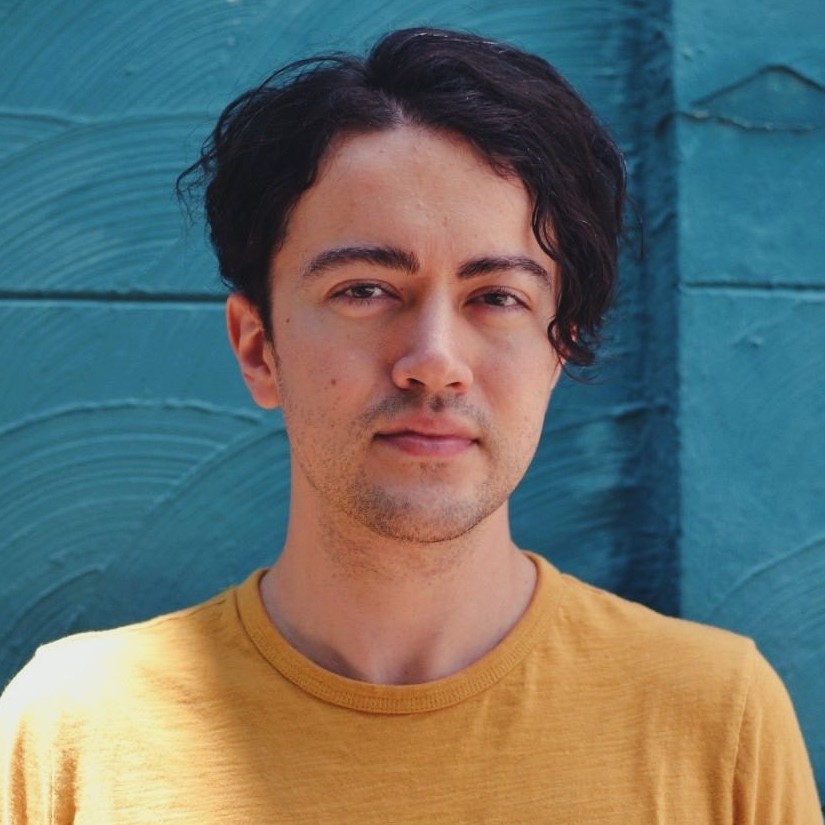“Donoso’s relationship with his literary work was suffocating, nourished as much by his devotion to a vocation and fate, which allowed no room for other possibilities, as it was by the obsessions and insecurities of his brilliant, complex psyche.”
I
On October 5, 2024, the hundred-year anniversary of the birth of Chilean writer José Donoso was celebrated in his home country. Over the course of said year, his figure was revisited and analyzed in countless ways: news reports, lectures, studies, and a great many more, all illuminated by the publication of the second part of his diaries in 2023 under the title Diarios centrales: A Season in Hell, 1966–1980 (Ediciones Universidad Diego Portales). Donoso’s reappearance in the media and in literary circles led me to ponder and recall his life , his place in our fragile memory. His memory and position differ from those of the canonical poets who form a sort of literary Olympus in Chile. He has no foundation or house-turned-museum (his home was destroyed in the real-estate speculation of the early twenty-first century), nor does he have an avenue with his name on it or a bust in the middle of a plaza. I don’t see him as having become a symbol. Something about him refuses to set aside his human condition, a complex and less accessible essence.
Some suggest that all good writers die twice; the first of these deaths comes when the writing itself, the well from which it springs, starts to dry out. The second is the natural, inevitable death: the physical end. To an extent, this theory pales in the cases of great novelists. They are born, they die, and they reemerge, only to then die again. Something keeps moving within and around their work. And, in Donoso, this intermittence, this blinking between life and death, continues to pulsate, far from any last breath.
If we take a biographical and linear approach, Donoso’s literary career began with the publication of his first short stories in 1955; he was 31 years old and, besides writing, he was also beginning his travels. This indissoluble relationship between movement and literature would lead him to live in several countries, mainly Spain and the United States, during the most significant years of his career. Abroad, far from Chile—a home country with which he maintained a tense, complicated relationship—his most important novels would take shape: El lugar sin límite, El obsceno pájaro de la noche, Casa de campo, and El jardín de al lado. And, during this same period, he situated himself as part of the Boom. But his participation in this explosive heyday of Hispano-American literature was brief and slanting. This secondary position, this step to the side, was not owing to any particular stance or philosophy. He always wished for readers and success. Its cause might be found in the deeper elements of his work. Donoso, unlike his contemporaries, was not a political writer. Maybe his books lacked the sought-after ingredients in the midst of that explosion. In his Historia personal del boom, he illustrates this time with sharpness and precision, sometimes from within and sometimes from without. Not as a critic or a theorist, but rather as a novelist and as the great reader he was.
Donoso’s relationship with his literary work was suffocating, nourished as much by his devotion to a vocation and fate, which allowed no room for other possibilities, as it was by the obsessions and insecurities of his brilliant, complex psyche. These elements would shape a writer incapable of making concessions. His step to the side led him to live near Barcelona, the publishing hub of the day, but not in Barcelona. He lived in small towns: Vallvidrera, then Calaceite, and Sitges, on the shores of the Mediterranean—an atmosphere that did not sink in deep enough to allay the demons within him. Donoso was dark, and that darkness lay wherever he looked; it was present in the details that caught his interest and defined the stories he hoped to tell: a fissure that demolished the “superficial” perfection “of every vision.” It was in his social class, the Chilean bourgeoisie or aristocracy, that he identified this rift. Behind an apparent normality dwelled the monstrous. It dwelled alongside this normality on back patios, in the night, in small-town brothels, in the poverty and cold eased by smoldering embers. It found a home on his dust-gathering scraps and dregs, on rags, splinters, and old photographs through which he reconstructed grotesque rooms and houses. It found a home also in his body, in his illness, in his veiled homosexuality, in his old age transplanted to beds whose occupants would never get up. In aged maids confined to gloomy abodes where deformity, forgetfulness, and confinement shared space. This underworld was fascinating and mysterious to him, and his way of coming to terms with it, through his use of words, was dizzying and unique—a distorted atmosphere evoking the misery available to all of us, in which the door of every possibility gradually shuts. This is how he employs the imbunche in El obsceno pájaro de la noche (translated as The Obscene Bird of Night by Hardie St. Martin, Leonard Mades, and Megan McDowell), making use of his own country’s mythology:
…and they talked about fear, about fear past and present, about fear at whatever time… because that’s the reason witches steal poor innocent children, to turn them into imbunches and keep them in their underground grottoes, with their eyes sewed up, their sex organs sewed up, their anuses sewed up, their mouths, nostrils, ears, everything sewed up, letting their hair and their fingernails and their toenails grow long, turning them into idiots.
[…]
My body’s shrunken because they sewed me up so tight. I know this is the only form of existence—the smarting of my scraped skin, the asphyxiating lint, the pain in my wracked body—because if there were some other form of existence there’d also have to be a past and a future, and I don’t remember the past and I know nothing about the future, hidden as I am here in the blissful repose of oblivion, because I’ve forgotten everything and everything’s forgotten me.
The novel’s images began to develop within him when, in the Santiago of the 1950s, he saw a child traveling in a fancy car whose body seemed a synthesis of every deformity a human being might bear. This sight, lasting just a few seconds, struck him as intense and hallucinatory. From there, a series of questions was unleashed that would lead him to create a labyrinthine, intricate world in which the owner of an estate builds a private country, inhabited by anomalous beings, in which his son—likewise born with deformities—might have the chance to be normal in the midst of strangeness. He finished the novel in Spain. It was, perhaps, his greatest work, and the one that contains all the elements that might be called “Donosian”: elements that are not easy to endure, despite the skill with which they are narrated, and that are at once an allegorical revelation of his obsessions with his country, “with the ghosts of that reactionary, residual Chile where I grew up, that repelled and fascinated me at once, but that, in any case, had me—and perhaps has me still—trapped in its claws.”
“With Chile’s 1973 military coup, Donoso suffered a double-sided shockwave. The violence, the establishment of a dictatorship, and the volatile news from his homeland had an impact on his neurosis, as did his certainty that these happenings must take their place in his work’s subject matter.”
There is something in Donoso that hurts, that sticks a finger into the wound of our failings, that rubs in what we wish not to see as human beings and as a society. This makes him taxing and difficult. I believe he had no pretensions of critiquing society through his fiction; his motivations were psychological and personal. He wished only to break through the sack that smothered him, for the possibility of having a past and a future, and the only mechanism by which to achieve this was to be found in writing and art.
With Chile’s 1973 military coup, Donoso suffered a double-sided shockwave. The violence, the establishment of a dictatorship, and the volatile news from his homeland had an impact on his neurosis, as did his certainty that these happenings must take their place in his work’s subject matter. It was no longer a matter only of the fissure in his reactionary social class; now, politics came to the fore. He could not skip over politics, finding himself forced to incorporate something with which he was not entirely comfortable, which was not part of his obsessions and musings. He does so in coded fashion in Casa de campo, where he incorporates not-so-easily decipherable metaphors, and more directly in El jardín de al lado, a book with greater luminosity and humor, but one also marked by the failure of a Chilean writer living in Catalonia and by emotional and sexual ambiguity. With his freshly published book in hand, José Donoso returned to Chile in 1981, alongside his wife and Pilar, the daughter they had adopted.
II
Returning to his home country was a bittersweet experience. He came back to the same fissures he had always detested, as well as a cultural environment impoverished by dictatorship and provincialism. He carried on writing with the same energetic difficulty as ever, but with ambivalent results, plagued by the physical frailty—perhaps brought on by hypochondria—of premature old age, in his own self-perception or disillusion. He had the bitter impression that his books no longer generated interest; he started to lose faith in his old subjects. It is possible, though, that each of these impressions had in fact plagued him from the start. The sack began to close in around him, and his writing no longer had enough strength to tear through it. La desesperanza, Donde van a morir los elefantes, Conjeturas sobre la memoria de mi tribu, and El Mocho—the novels he wrote in his later years—received less recognition. Before his death in 1996, he suspected his work would be forgotten; time began to pass too quickly at the end of the twentieth century, harangued by an unstable modernity. To an extent, his suspicions came true.
Santiago, August 19, 1981.
I am 57 years old with a literary career more respected outside than inside Chile; I see—still far away, but I see it—old age, and I have neither the energy nor the desire to keep wandering the world. But it is very hard for me to relate to Santiago—to the world of Santiago as much as the pretentious, horrible physical Santiago—and to feel the electrical current that motivates me and calls/carries me to write something freely, from the outside. I feel that everything surrounding me is false, insufficient, and negative. And, nonetheless, I recognize that I am from here, that this unloved here tethers and defines me. (Excerpt from the third volume of Donoso’s diaries, Revista Santiago, 2024)
Throughout his life, José Donoso scrupulously kept a diary in which he described his creative process in detail, as well as expressing his obsessions, insecurities, and personal problems. It seems he hid nothing. More than sixty of his notebooks are distributed between the University of Iowa and Princeton, bequeathed by the author himself. I am unaware of the details and conditions on which his notebooks were acquired, but I have no doubt that Donoso was aware they would someday be read. Donoso was a literary animal; he dwelled in the world of books in all its forms: as a professor in the United States, through journalism, as part of the most significant Latin American literary movement in history, and as an exceptional reader. The fate of his books, their unpredictable significance, must have entered into his reflections. I like to think Donoso, on the tabletop of his oeuvre, made some calculations, left behind some clues, and laid some bait.
In 2009, Pilar Donoso, the writer’s daughter, published Correr el tupido velo after immersing herself in Donoso’s diaries for years. The notebooks were known to exist, but before they were no more than a curiosity for scholars and academics. Pilar’s book, a cathartic exploration in which an adoptive daughter attempts to reevaluate her life and identity through her father’s personal notes, caused an uproar and brought new interest. This work was a remarkable initiation, courageous and well written—a book that will last and that has taken its place in the author’s world. But, for her, the adventure had an unhappy ending. She took her own life two years later.
This difficult declaration of daughterly love garnered interest from the papers, where a new dimension of the authors was revealed. His secrets and his meanness, his envy of his peers, the strained laboratory of his writing, which leads us to wonder if all the suffering of his creative process was a condition of the resulting body of work. And, above all, a complete surrendering of the self to literature, in which reality merges with fiction and the two coexist with no hierarchical distinction. The first volume of these diaries, meticulously edited by Cecilia García-Huidobro, was published in 2016, and the second in 2023. We now await the third. In them, we find a symbiosis between creator and creation that breathes new life—just as complex, if not more so—into the author’s work and existence.
Translated by Arthur Malcolm Dixon



